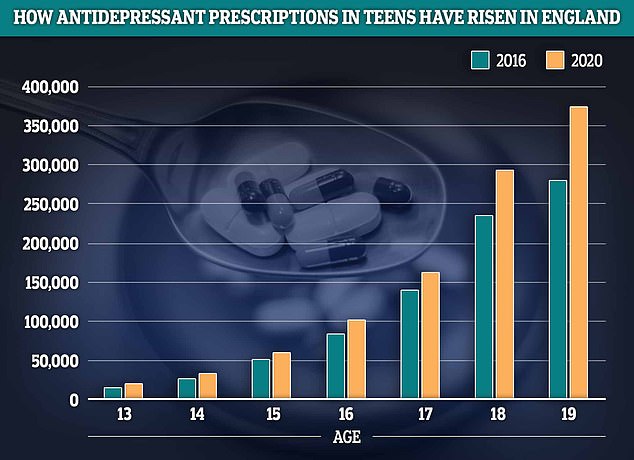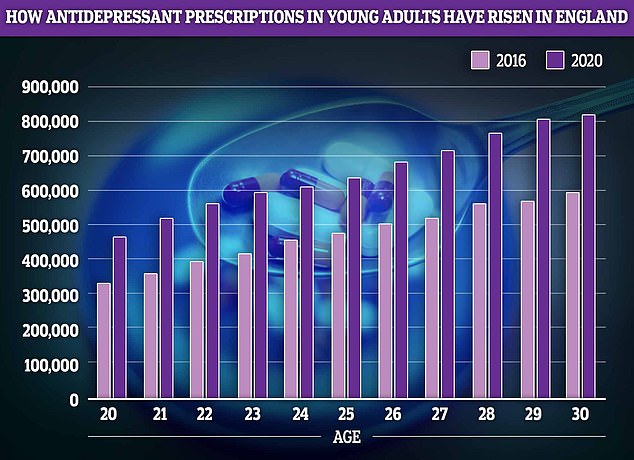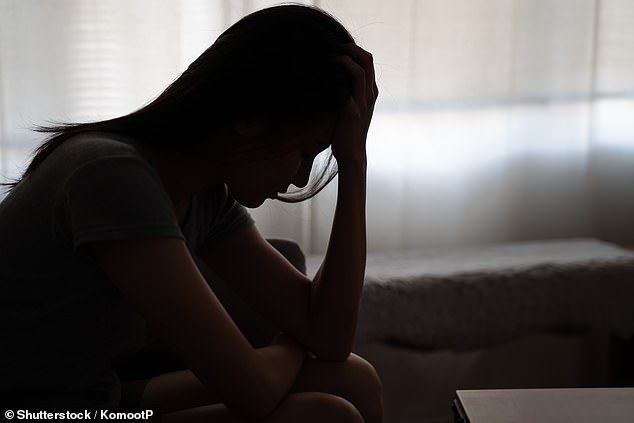Experts say brain scans show there are six different types of anxiety and depression in a discovery that could lead to better treatments for people with mental health problems.
A combination of anxiety and depression is estimated to be the most common mental health problem in Britain, affecting around eight per cent of the population, with a similar rate in the United States.
However, many people with these conditions are forced to go through different treatments, including psychotherapy and medication, in the hopes of finding one that works.
Data suggests that up to four in 10 patients don’t find a treatment that works on the first try, which can cause them to suffer longer.
Now, a team of American and Australian scientists has used brain scanning technology to find specific new types of depression and anxiety in a bid to one day help speed up this process.
A combination of anxiety and depression is estimated to be the most common mental health problem in Britain, affecting around 8 per cent of the population, with a similar rate in the US.
To do this, they collected data from a sample of 1,051 patients with depression and anxiety, 850 of whom were not currently being treated.
The patients underwent brain scans while both were at rest and when they were asked to perform an emotional task such as responding to photographs of sad people.
Experts from the University of Sydney and Stanford University in California then compared these results between patients and healthy controls to detect any differences.
The goal was to find whether different parts of the brain “light up” between patients, showing that sections of the organ behaved differently between some participants.
They also assessed each participant’s symptoms of depression and anxiety, such as insomnia or feelings of suicide, to also identify any common signs among patients with similar brain scan results.
The end result was that the scientists were able to group the patients and divide depression and anxiety into six different subtypes.
These were named DC+SC+AC+, AC−, NSA+PA+, CA+, NTCC-CA− and finally DXSXAXNXPXCX.
The subtypes were distinguished in brain scans by certain neural pathways that were overactive or underactive when at rest or responding to certain stimuli.
For example, CA+ patients (258) were found to have an overactive cognitive control circuit, the part of the brain responsible for planning and preparation.
While DC+SC+AC patients (169 participants) had slower than typical responses when it came to recognizing photographs of sad people.
Some also had differences in symptoms. For example, DC+SC+AC+ patients suffered greater lapses in concentration and impulsivity compared to other groups.
On the other hand, NSA+PA+ patients (154) had much more severe anhedonia, which is a clinical term for someone who has a lack of interest, enjoyment, or pleasure in life experiences.
In the final part of their study, the scientists also examined whether, among patients receiving therapy or medication, any of them appeared to be more effective in certain subtypes.
They found that DC+SC+AC+ patients responded better to behavioral treatment, such as cognitive behavioral therapy (CBT) offered by the NHS, compared to the other subtypes.

Antidepressant prescriptions among teenagers increased by a quarter in England in 2020 compared to 2016. The biggest growth was seen among 13- to 19-year-olds, where prescription rates increased by around a third.

Young adults, often leaving home for the first time and starting their careers, also saw antidepressant prescription rates increase by about 40 percent.
This was particularly the case for the AC- patients (161) who, in contrast, had the worst response of any group to behavioral treatment.
Another key difference identified was that CA+ patients had a better response when prescribed the antidepressant venlafaxine.
The authors of the study, published in Nature medicineHe said finding more specific diagnoses for depression and anxiety and, by extension, which treatments are most effective for each type would improve outcomes for patients.
“The dominant ‘one size fits all’ diagnostic approach in psychiatry leads to trial-and-error treatment options, which is time-consuming, expensive and frustrating, with 30 to 40 percent of patients failing to achieve remission after to try a treatment. ,’ they wrote.
While they stated that their results were promising, they said they also needed to be approached with caution and that other studies would need to replicate their findings.
Other experts have been concerned for years about “one-size-fits-all” approaches to patients suffering from depression.
These concerns have primarily focused on the use of a type of antidepressant called selective serotonin reuptake inhibitors (SSRIs), taken by millions of people, and its libido-crushing side effects.
Some users have reported being transformed into “sexless” zombies even years after they stopped taking the mind-altering pills.
Use of the pills has skyrocketed in recent years, despite growing unease among experts about the drugs’ effectiveness in treating depression.
Some studies have even suggested that they could increase the risk of heart problems in young people or even, paradoxically, increase the risk of suicide along with sexual well-being problems.
However, such research is unclear, and other experts point out that such trends could be due to patients suffering from the depression that the medications are designed to relieve, rather than the medication itself.
And many people who take them insist that they work.
It is believed that people with depression have low levels of serotonin, although there is a scientific debate about this and SSRIs combat it by increasing these levels.
However, some experts suspect that the drugs could be causing the release of too much serotonin, with consequences for people’s health.
Psychiatrists advise patients concerned about the side effects, or possible side effects, of antidepressants to talk to their healthcare provider about their options.
Sometimes doctors may offer an alternative dosage, a different drug, or prescribe another medication to combat side effects.
They urge patients who take them not to stop without first speaking to the medical professional responsible for their care to ensure they receive appropriate support.

